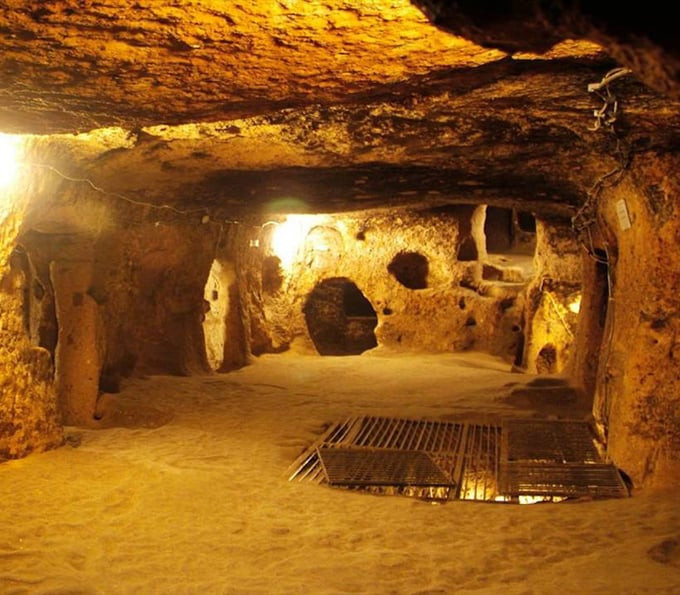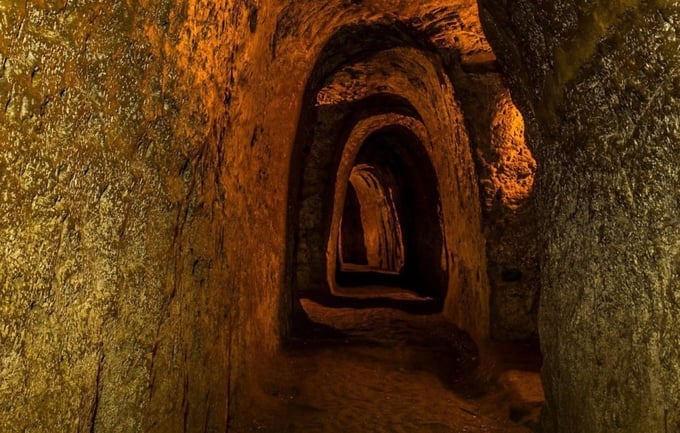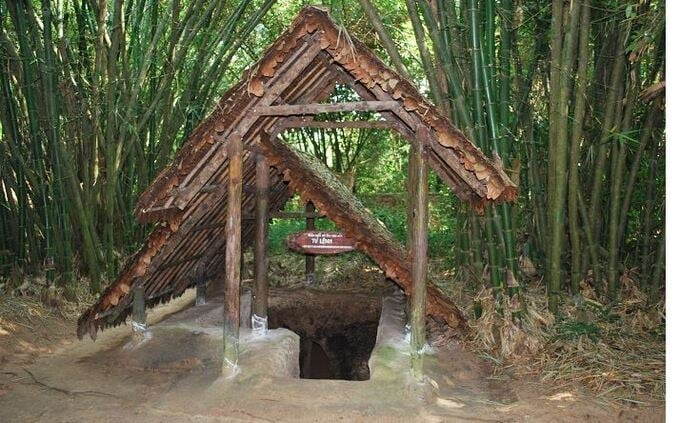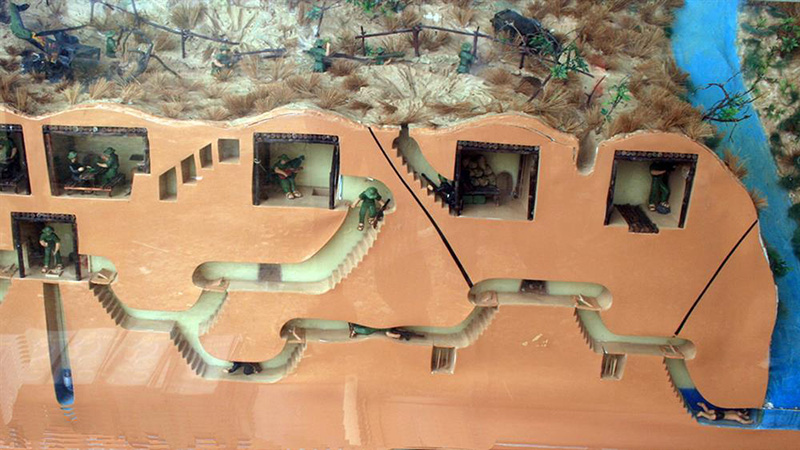The Củ Chi Tunnels, an unmistakable “wonder” located about 70km northwest of downtown Ho Chi Minh City, is known as the “city beneath the ground”. It is one of the famous underground defense works, widely known domestically and internationally as a symbol of the revolutionary spirit of Vietnam.
In December 2015, the Prime Minister recognized this work as a Special National Monument. By 2020, the Department of Culture and Sports was entrusted by the Ho Chi Minh City People’s Committee to consult on the dossier to propose that the Cu Chi Tunnels be recognized by UNESCO as a World Heritage Site.

The Cu Chi Tunnels, a symbol of the indomitable spirit of our troops and people in the resistance war against the US to save the country, is a system of tunnels over 200km long, hidden deep underground.
The Department of Culture and Sports stated that they, together with the Cu Chi Historical Site and the Cu Chi District People’s Committee, have completed a summary report on the tunnel heritage and submitted it to the Ministry of Culture, Sports and Tourism. This means that phase 1 of the process of preparing the dossier to submit to UNESCO for recognition of the Cu Chi Tunnels as a World Heritage Site has been completed.
The report has indicated two criteria, specifically criteria (IV) and (V), out of a total of ten criteria of UNESCO to assess the outstanding global value of this heritage.
Based on criterion IV, the heritage is considered an outstanding example of a type of construction, architectural, or technological ensemble or landscape that illustrates a significant stage in human history.

The place marks heroic feats, showing the intelligence and bravery of the Vietnamese people, making the enemy terrified.
The report shows that the Cu Chi Tunnels are an underground architectural masterpiece with unique, solid, sophisticated, and complex structures, hidden underground, reflecting the creativity, intelligence, and strength of the Vietnamese people. It is also one of Vietnam’s most spectacular underground works in the 20th century, demonstrating the aspirations for life and peace of the Vietnamese people, as well as the common aspirations of all nations in the world.
Based on criterion V, the heritage is seen as an outstanding example of a traditional human settlement, land-use, or sea-use which is representative of a culture (or cultures), or human interaction with the environment especially when it has become vulnerable under the impact of irreversible change.
With this criterion, the Cu Chi Tunnels are considered a typical example of creativity in utilizing the terrain, geological conditions, topography, and natural environment (such as hills, forests, near rivers and canals). Especially, with the dry and solid soil of Cu Chi, the construction of underground architectural tunnels with long and solid passages beneath the ground for hiding, habitation, defense, and combat becomes advantageous.

Visitors can explore hiding tunnels, Hoang Cam kitchen, living areas, and experience the sensation of fighting underground.
According to information from the Department of Culture and Sports of Ho Chi Minh City, after achieving consensus from relevant agencies, the Ministry of Culture, Sports and Tourism will report to the Prime Minister for consideration. Cooperation with the UNESCO National Committee of Vietnam will be permitted to register with the UNESCO World Heritage Center to nominate the Cu Chi Tunnels and plans to build the World Heritage dossier.
If the dossier receives approval from the Prime Minister, the research and construction of the heritage dossier will begin phase 2, with an estimated time of 4-5 years. Therefore, it is expected that by 2027, the Ho Chi Minh City People’s Committee, together with the Ministry of Culture, Sports and Tourism, will complete the dossier and advise the Prime Minister to propose to UNESCO the consideration of including the Cu Chi Tunnels, a historical monument, in the World Heritage List.

The Cu Chi Tunnels are a special national historical monument, an attractive destination for domestic and international tourists, helping future generations to gain a deeper understanding of the heroic history of the nation.
The Cu Chi Tunnels, a symbol of perseverance and creativity, form a complex network of various underground tunnels, located beneath the land of Tan Phu Trung and Phuoc Vinh An communes, Cu Chi district. In the initial stage, these tunnels were only short tunnels with simple structures, used as hiding places, document storage, hiding weapons, concealing revolutionary forces, and serving as an information network. Each village built its own separate tunnel system, but later, to meet the needs of transportation and communication between villages, these tunnels were connected, forming a complex and large-scale interconnecting tunnel system.
By 1965, the Cu Chi Tunnels had expanded significantly, including about 200km of tunnels and 500km of traffic tunnels. The tunnels were meticulously and scientifically built, with three different levels: the top level about 3m from the ground, the middle level about 6m from the ground, and the bottom level deep from 8 to 12m. Each level contains many tunnels of different sizes, and many areas are divided according to different functions, including dining rooms, meeting rooms, medical rooms, movie theaters, water wells, kitchens with Hoang Cam stoves (smokeless stoves), and emergency exits leading to the Saigon River. Especially, the ventilation system passing through the ground has been camouflage in a sophisticated and scientific manner, ensuring the safety and efficiency of the tunnels.






























